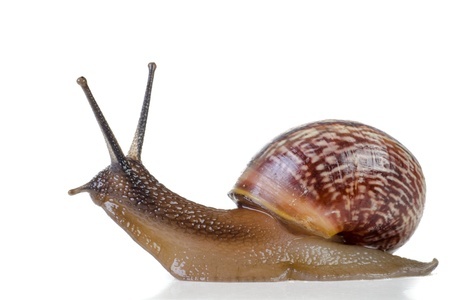
Snails
SNAILS (Helix aspersa)
Description:
Introduced from France during the 1850s as food, the Brown Garden Snail is the most common snail causing problems in southern California landscapes. Both are of the mollusk phylum. The brown garden snail is about 1 inch in diameter when fully grown and has a distinct color pattern. The shell of the garden snail is light brown with dark brown bands following the spiral of the shell. Colorations can vary from pale yellow to almost black. Snails and slugs move by gliding along on a muscular foot. This muscle constantly secretes mucus, which dries to form a silvery slime trail.
Biology:
Snails are most active during the night and damp early morning. In southern California, young snails are active throughout the year. Temperate weather and irrigated, commercial, landscapes allow them to be active year-round. Garden snails are very prolific. They lay as many as 80 eggs, six times a year that's 480 snails per female in one year!
Did You Know?
Snails have eyes on the tips of their tentacles, but their vision is poor because they have no muscles to focus images.
Impact:
Snails and slugs feed on a variety of landscape plants as well as on decaying plant matter. They chew irregular holes in smooth leaves and flowers, severely damaging herbaceous and succulent plants. During hot, dry, or cold periods, snails seal themselves off with a parchment-like membrane and attach themselves to building walls and windows. This is when snails are the most destructive. The slimy secretions used to seal themselves off are very acidic and can cause permanent damage to paint, concrete, tile, marble, and even glass windows. The circular etchings can often be seen on mirrored glass windows of office buildings, especially windows at ground level.
Solutions:
The number one way to control garden snail populations in commercial landscapes is by examining irrigation practices. The goal should be to reduce or eliminate dampness where snails are drawn. The choice of plant species also plays a role in preventing snails as a serious pest. Pesticidal baits can be used as a regular part of pest control services.
